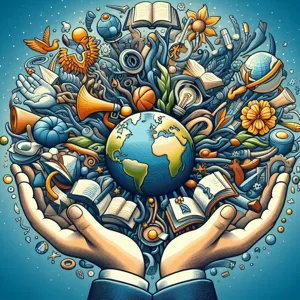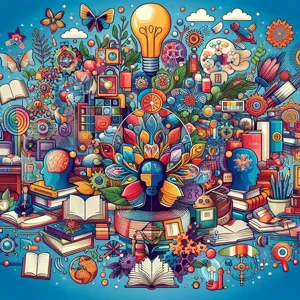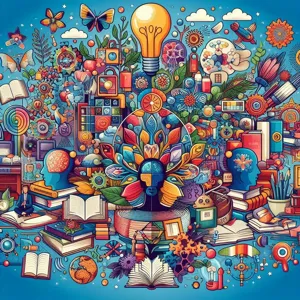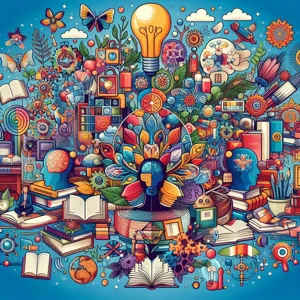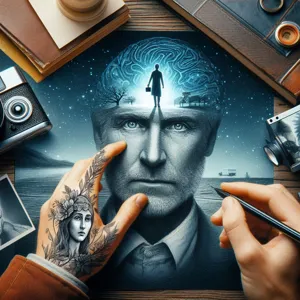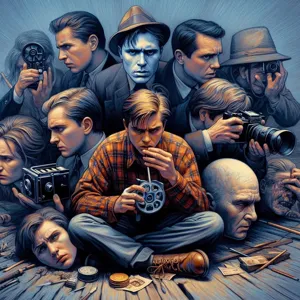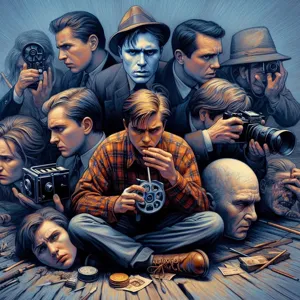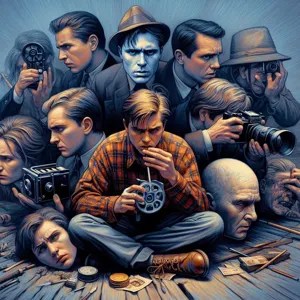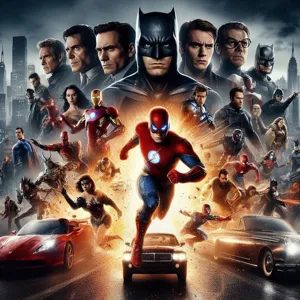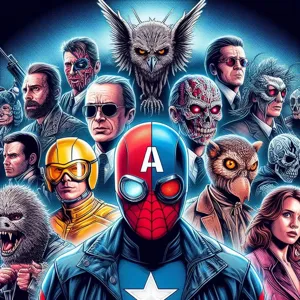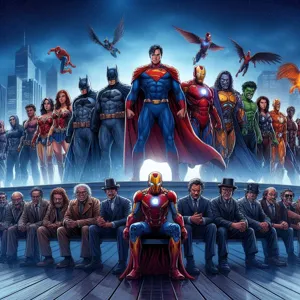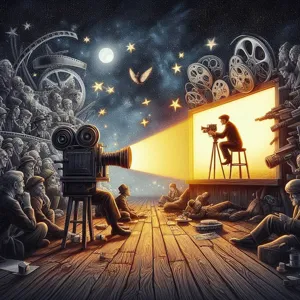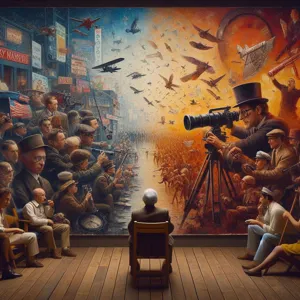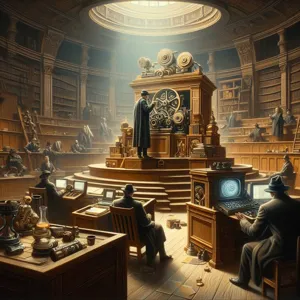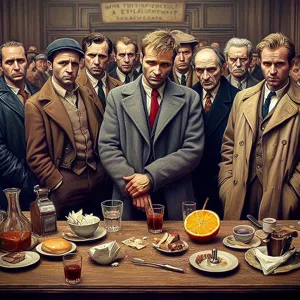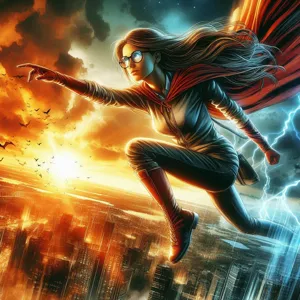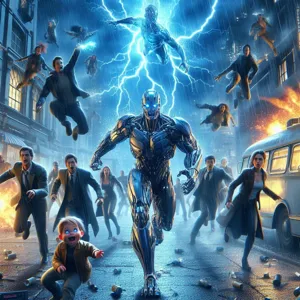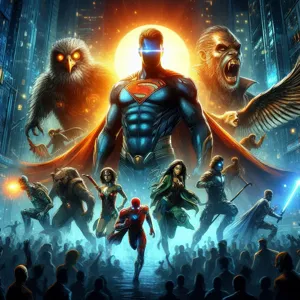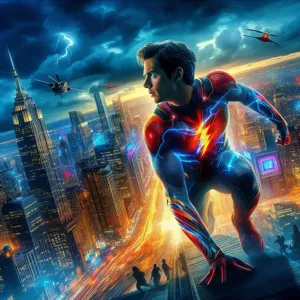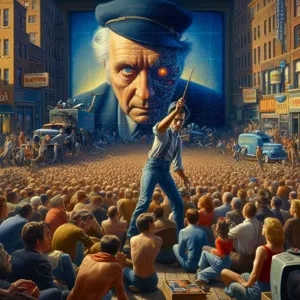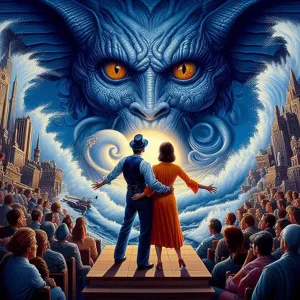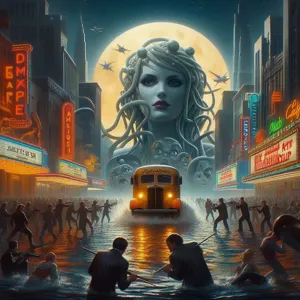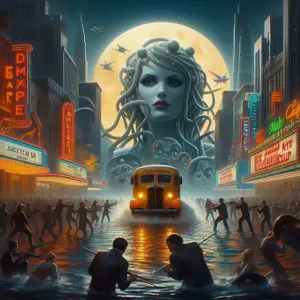Historical fiction has a unique ability to transport readers through time, offering a vivid and immersive experience that transcends the boundaries of mere storytelling.
As we flip through the pages of a well-crafted narrative, we find ourselves not only witnessing pivotal moments in history but also feeling the pulse of the cultures that shaped those times. From the grandeur of ancient civilizations to the struggles of ordinary people navigating tumultuous eras, historical fiction serves as a powerful lens through which we can explore the rich tapestry of human experience. In this blog post, we will delve into the profound impact of historical fiction on our understanding of diverse cultures, examining how these narratives breathe life into the past and foster empathy, curiosity, and a deeper appreciation for the intricacies of history. Join us on this enlightening journey as we explore the dynamic interplay between storytelling and history, revealing the transformative power of engaging with the past through the art of fiction.
1. Introduction to Historical Fiction
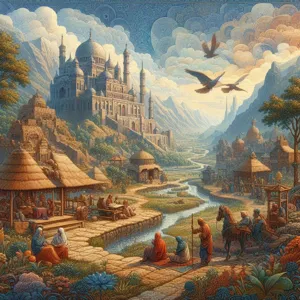
Historical fiction serves as a captivating bridge between the past and the present, allowing readers to traverse time and explore cultures that shaped human experiences. This genre artfully intertwines fact and imagination, blending meticulously researched historical events, figures, and settings with the vivid, creative narratives that breathe life into the pages.
In its essence, historical fiction transports readers to different eras, immersing them in the sights, sounds, and emotions of times long gone. Whether it’s the bustling streets of Renaissance Florence, the tense atmosphere of World War II, or the vibrant landscapes of ancient civilizations, these stories invite us to witness history through the eyes of compelling characters who navigate the complexities of their worlds.
The power of historical fiction lies not only in its ability to educate but also in its capacity to evoke empathy and connection. As readers delve into the lives of characters from diverse backgrounds and experiences, they gain insights into the cultural norms, struggles, and triumphs that defined those periods. This genre encourages a deeper understanding of humanity’s shared journey, fostering a sense of belonging that transcends time and place.
Moreover, historical fiction can serve as a mirror, reflecting contemporary issues through the lens of the past. By examining how individuals and societies responded to challenges, readers can draw parallels to their own lives, gaining valuable perspectives that resonate today. Ultimately, historical fiction is more than just a narrative—it’s a powerful tool for exploration, reflection, and connection that invites us to not only remember the past but also to learn from it as we navigate our own stories in the present.
2. The Importance of Cultural Representation in Literature
Cultural representation in literature is not just a matter of diversity; it is a vital aspect of storytelling that enriches our understanding of the world and our shared human experience. When authors weave cultural narratives into their historical fiction, they breathe life into the past, allowing readers to step into the shoes of people from different backgrounds, eras, and perspectives. This representation is crucial as it fosters empathy and connection, enabling readers to grasp the complexities of cultural identities and historical contexts that shape our societies today.
Consider works that delve into the lives of marginalized communities or depict significant yet overlooked historical events. These stories provide a voice to those often silenced in mainstream narratives, challenging stereotypes and broadening our worldview. The importance of cultural representation goes beyond mere visibility; it actively engages readers in dialogues about race, gender, class, and power dynamics throughout history.
Moreover, historical fiction can serve as a powerful tool for preserving cultural heritage. By immortalizing traditions, languages, and social customs within the fabric of a narrative, authors help ensure that these elements are not lost to time. This preservation is especially crucial in an era where globalization can sometimes overshadow local cultures. Through well-researched and thoughtfully crafted stories, readers gain insight into the richness of diverse customs and practices, fostering appreciation and respect for differences.
In a world where cultural narratives often clash or compete for attention, literature has the unique ability to unite us through storytelling. It invites us to explore the tapestry of human experience, recognizing that the past informs the present and that every culture has a story worthy of being told. By prioritizing cultural representation in historical fiction, we not only honor those who came before us but also enrich our own understanding of the world we inhabit today.
3. How Historical Fiction Offers a Window into Different Eras
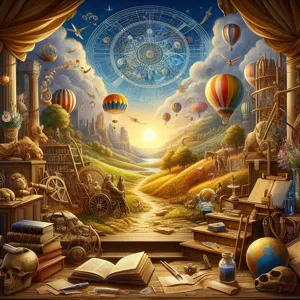
Historical fiction serves as a captivating lens through which readers can immerse themselves in the lives, struggles, and triumphs of people from different eras. By weaving together meticulously researched facts with the imaginative liberties of storytelling, authors breathe life into the past, transforming it from mere dates and events into vivid narratives that resonate on a personal level.
When you open the pages of a historical novel, you’re not just reading about a time period; you’re stepping into it. The sights, sounds, and emotions of the past come alive as characters navigate the complexities of their worlds, facing dilemmas that may echo our contemporary challenges. Whether it’s the hustle and bustle of a market in medieval Europe or the quiet resilience of a family during the Great Depression, historical fiction paints a rich tapestry of human experience, allowing us to understand cultural norms, societal structures, and the pivotal moments that shaped history.
Moreover, historical fiction acts as a bridge connecting generations. It invites readers to engage with the stories of their ancestors, fostering a deeper understanding of their heritage and the cultural contexts that shaped their identities. This genre doesn’t shy away from exploring the darker aspects of history either—wars, injustices, and societal upheavals are often central themes, prompting reflection on how these past events continue to influence the present.
In essence, historical fiction not only entertains but educates. It encourages readers to empathize with characters from different backgrounds and time periods, enriching our understanding of the diverse tapestry of human existence. Through the imaginative storytelling of historical fiction, we gain insights into the triumphs and tribulations of those who came before us, reminding us that while times may change, the core of the human experience remains timeless.
4. The Role of Research in Crafting Authentic Narratives
When it comes to historical fiction, research is the backbone of authenticity. Crafting narratives that resonate with readers requires more than just a vivid imagination—it’s about weaving together the threads of history, culture, and human experience into a tapestry that feels genuine and immersive. Thorough research allows authors to delve into the nuances of the time period they are depicting, from social customs and language to the intricacies of daily life and significant historical events.
Imagine setting your story in Victorian England. To truly capture the essence of that era, an author must explore the intricacies of class dynamics, the impact of industrialization, and the societal expectations placed upon men and women. This can involve sifting through period journals, letters, and newspapers, as well as examining literature and art from the time. By immersing themselves in these primary sources, writers can create characters who speak and act in ways that feel authentic to their historical context.
However, research isn’t solely about facts and dates; it also involves understanding the emotions and motivations that drive people within those historical frameworks. What fears and hopes did they harbor? How did their cultural background shape their decisions? By answering these questions, authors can create multidimensional characters that resonate with readers on an emotional level, bridging the gap between past and present.
Additionally, engaging with historians or experts in specific cultures can provide invaluable insights that might not be readily available in books or articles. These interactions can illuminate lesser-known aspects of history, enriching the narrative and ensuring a respectful representation of cultures and experiences.
In essence, the role of research in historical fiction extends beyond mere accuracy; it is about fostering a deeper connection between readers and the past. By grounding narratives in well-researched contexts, authors not only honor the stories of those who came before us but also invite readers to explore and reflect on the complex tapestry of human history. As a result, historical fiction becomes a powerful vehicle for cultural exploration, illuminating the timelessness of the human experience across different eras and societies.
5. Notable Historical Fiction Authors and Their Contributions
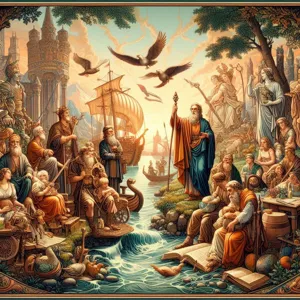
Historical fiction is a rich tapestry woven from the threads of imagination and historical fact, brought to life by the brilliant minds of authors who have dedicated their craft to exploring the past. Among these storytellers, several notable figures have made significant contributions to the genre, each offering unique perspectives that deepen our understanding of history and humanity.
One such author is **Hilary Mantel**, whose acclaimed *Wolf Hall* trilogy intricately examines the life of Thomas Cromwell during the tumultuous reign of Henry VIII. Mantel’s masterful prose and meticulous research transport readers to Tudor England, painting a vivid picture of political intrigue and personal struggle. Her ability to breathe life into historical figures and present them as complex, relatable characters has earned her multiple prestigious awards, including the Booker Prize.
Another luminary in the realm of historical fiction is **Ken Follett**, renowned for his epic novels such as *The Pillars of the Earth*, which delves into the intricate world of 12th-century England during the construction of a cathedral. Follett’s storytelling prowess lies in his ability to blend historical details with engaging narratives, making intricate historical events accessible and enthralling to his readers. His work not only entertains but also educates, sparking interest in the historical periods he portrays.
**Philip Pullman** also makes a significant mark in the genre with his *His Dark Materials* trilogy, which, while often categorized as fantasy, weaves in historical elements that provide a backdrop to its fantastical narrative. Pullman’s work encourages readers to explore philosophical and ethical questions, all while grounding them in historical contexts that enrich the reader’s experience.
Finally, we cannot overlook the contributions of **Colson Whitehead**, whose Pulitzer Prize-winning novel *The Underground Railroad* reimagines the harrowing journey of escaped slaves through a literal railroad system. Whitehead’s innovative approach not only sheds light on the brutal realities of slavery but also speaks to the resilience of the human spirit, creating a narrative that resonates powerfully in contemporary discussions about race and identity.
These authors, among many others, showcase the power of historical fiction to bridge the gap between past and present. By weaving together fact and fiction, they invite readers to engage with history on a deeper level, fostering empathy and understanding across time. Their contributions underscore the importance of storytelling as a means of exploring cultures, societal struggles, and the human experience throughout the ages.
6. Examining Cultural Values and Beliefs Through Stories
Examining cultural values and beliefs through stories is one of the most profound aspects of historical fiction. This genre has a unique ability to transport readers back to different eras, allowing them to not only witness events but also immerse themselves in the intricate tapestry of daily life, societal norms, and prevailing ideologies of the time. Through the eyes of well-crafted characters, readers can explore the complexities of human behavior shaped by the cultural context in which they live.
For instance, a novel set during the Renaissance can illuminate the clash between burgeoning humanism and traditional religious beliefs, revealing how these competing values influenced people’s choices, relationships, and even their fates. Similarly, a narrative set in the tumultuous times of the Civil Rights Movement can provide insights into the struggle for equality, showcasing the deep-seated beliefs about race, identity, and justice that defined an entire generation.
Moreover, historical fiction often sheds light on the lesser-known cultural practices and rituals that may have been overlooked by mainstream historical accounts. Through storytelling, authors can highlight the customs, beliefs, and daily lives of marginalized communities, giving voice to those who might otherwise remain silent in the annals of history. This exploration fosters empathy and understanding among readers, bridging cultural divides and enriching their appreciation of the diverse human experience.
By delving into these stories, readers not only gain a deeper understanding of specific historical periods but also reflect on their own cultural values and beliefs. The insights gleaned from these narratives can prompt introspection and discussions about how history informs our present and shapes our future. In this way, historical fiction becomes more than just a window into the past; it is a powerful tool for cultural examination and connection, inviting us to consider the timeless themes of love, conflict, resilience, and the ever-evolving nature of humanity.
7. The Emotional Impact of Historical Events in Fiction
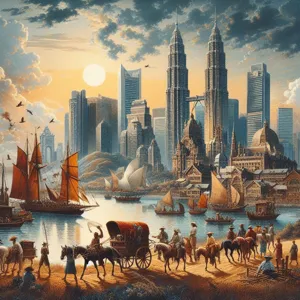
The emotional impact of historical events in fiction is profound, weaving together the threads of human experience and collective memory. When authors set their narratives against the backdrop of real historical events, they not only provide context but also create a powerful emotional resonance that can transport readers to another time and place. Through the lens of fictional characters, we can experience the joys, sorrows, triumphs, and tragedies that define the human condition.
Consider a novel set during the tumultuous years of World War II. As readers follow the lives of individuals navigating the chaos and uncertainty of war, they are invited to empathize with their struggles and victories. The weight of fear, loss, and resilience becomes palpable, allowing readers to connect with the past on a deeply emotional level. These stories serve not only as entertainment but also as a means of understanding the complexities of historical events and their lasting effects on society.
Moreover, historical fiction often sheds light on marginalized voices and overlooked narratives. By centering stories around characters who lived through significant events—whether they are soldiers, civilians, activists, or survivors—authors illuminate experiences that might otherwise remain in the shadows of history. This approach fosters empathy and a greater appreciation for the diverse tapestry of human experiences, encouraging readers to reflect on how these events shape our present and future.
Ultimately, the emotional impact of historical events in fiction lies in its ability to humanize history. It transforms dates and facts into relatable stories that evoke feelings of compassion, anger, hope, and inspiration. As readers traverse the pages of historical fiction, they are not merely absorbing facts; they are engaging in a dialogue with the past, grappling with its complexities, and allowing its lessons to inform their understanding of the world today. In this way, historical fiction becomes a powerful tool for empathy, education, and emotional connection across generations.
8. Bridging Generational Gaps: Connecting Past and Present
Historical fiction serves as a powerful bridge between generations, weaving together the threads of past and present in a way that resonates deeply with readers of all ages. In a world where technology often drives a wedge between different age groups, stories set in bygone eras can spark conversations that transcend time. These narratives invite younger readers to explore the complexities of history through the eyes of relatable characters, fostering empathy and understanding for the struggles and triumphs of those who came before them.
Imagine a teenager picking up a novel set during the suffrage movement, captivated by the passionate struggles of women fighting for their rights. As they delve into the pages, they not only learn about a pivotal moment in history but also find parallels to contemporary issues of equality and justice. This connection can ignite discussions at home, with parents and grandparents sharing their own experiences and insights, thereby enriching the younger generation’s understanding of both the past and the present.
Moreover, historical fiction often features timeless themes—love, loss, courage, and resilience—that resonate across ages. A well-crafted storyline can pull readers from different backgrounds and experiences together, creating shared moments of reflection and dialogue. For families, this can lead to deep connections during book clubs or casual conversations, where stories become a medium for exploring values and lessons that are just as relevant today.
In this way, historical fiction not only entertains but also educates, making it a vital tool for bridging generational gaps. By connecting the dots between the past and the present, these stories remind us that while times may change, the human experience remains fundamentally intertwined, allowing us to learn from history as we forge our paths forward.
9. The Power of Perspective: Diverse Voices in Historical Fiction
Historical fiction has a unique ability to transport readers to different eras and locations, but its true power lies in the myriad perspectives it can offer. By embracing diverse voices, authors breathe life into stories that reflect the complexities of human experience. When readers encounter narratives told from the perspectives of individuals who have been historically marginalized or overlooked, they gain a deeper understanding of the past and its lasting impact on the present.
Imagine stepping into the shoes of a young Indigenous girl navigating the tumultuous landscape of colonial America, or a Jewish family grappling with the horrors of World War II from their cramped hiding place. Each of these voices carries its own rich history, shaped by cultural nuances, struggles, and triumphs. By showcasing these diverse perspectives, historical fiction not only honors underrepresented narratives but also challenges the dominant historical discourse that often skews toward a singular viewpoint.
This inclusivity in storytelling fosters empathy and connection, inviting readers to engage with the lived experiences of others. As they traverse the pages of a novel, they are not merely observers of history; they become participants in a broader conversation about identity, resilience, and the human condition. The power of perspective in historical fiction, therefore, lies not only in its ability to entertain but also in its capacity to educate and inspire change, reminding us that history is not a monolith but a tapestry woven from countless stories, each deserving of its moment in the spotlight.
10. Historical Fiction as a Tool for Empathy and Understanding
Historical fiction serves as a powerful tool for empathy and understanding, bridging the gap between past and present in a way that pure historical texts often cannot. Through the immersive experiences crafted by skilled authors, readers are transported into different times, places, and cultures, allowing them to walk in the shoes of characters who lived in vastly different circumstances. This genre brings history to life, transforming dates and events into relatable human experiences filled with emotion, struggle, and triumph.
Imagine delving into the life of a young woman during the suffragette movement, navigating the complexities of her time with passion and determination. Through her eyes, readers gain a deeper appreciation for the sacrifices made in the name of equality, understanding the nuances of societal norms that once dictated lives. Similarly, a narrative set in the midst of a war-torn nation can illuminate the chaos and heartache of displacement, fostering a sense of compassion for those affected by conflict, both historically and in today’s global landscape.
Moreover, historical fiction invites readers to confront uncomfortable truths about humanity, such as the impact of colonialism, injustice, and inequality. By engaging with these narratives, readers can reflect on their own beliefs and biases, prompting critical discussions about the lessons of the past and their relevance in contemporary society. As novels weave together the threads of personal stories with broader historical contexts, they encourage emotional connections that foster a deeper understanding of diverse cultures and experiences.
Ultimately, historical fiction does more than entertain; it cultivates empathy. It allows us to explore the richness of human experience across different cultures and eras, reminding us that despite our differences, the core of humanity—our aspirations, fears, and dreams—remains universal. This genre not only enriches our knowledge of history but also inspires us to carry those lessons forward, promoting tolerance and understanding in an increasingly interconnected world.
11. The Influence of Historical Fiction on Modern Culture
Historical fiction serves as a powerful lens through which we can examine the intricacies of modern culture, blending the past with the present in ways that resonate deeply with contemporary audiences. By weaving together meticulously researched historical events and rich narratives, authors of historical fiction not only entertain but also educate readers about the complexities of different eras, cultures, and societies. This genre invites readers to step into the shoes of characters navigating the challenges and triumphs of their time, fostering empathy and understanding for experiences that may be vastly different from our own.
One significant influence of historical fiction on modern culture is its ability to shape collective memory. Through the retelling of pivotal moments in history—be it wars, revolutions, or cultural movements—these stories challenge us to reflect on how the past informs our present. For instance, novels that delve into the struggles for civil rights, women’s suffrage, or the impacts of colonization not only highlight historical injustices but also resonate with ongoing social movements today. They remind us that history is not merely a series of dates and events but a living narrative that continues to influence our values, beliefs, and actions.
Furthermore, historical fiction often sparks important conversations about identity and heritage. As readers engage with diverse narratives that explore various cultural backgrounds, they gain insights into the shared human experience that transcends time and geography. This awareness fosters a greater appreciation for cultural diversity and encourages inclusivity in our increasingly interconnected world. Book clubs and literary discussions surrounding these works often become platforms for exploring themes of resilience, belonging, and the quest for justice, thus nurturing a culture of dialogue and reflection.
In the realm of popular culture, adaptations of historical fiction—whether in film, television, or theater—serve to amplify these themes, reaching even wider audiences. Iconic works like “The Book Thief,” “The Nightingale,” and “Wolf Hall” have not only captivated readers but have also inspired adaptations that bring history to life on screen, further embedding these narratives into the fabric of contemporary culture. As we engage with these stories, we find ourselves not just passive consumers but active participants in the ongoing dialogue between our past and present, ultimately shaping our cultural landscape for the future.
In essence, the influence of historical fiction on modern culture is profound and multifaceted, offering insights, sparking discussions, and fostering connections that bridge the gap between yesterday and today. Through these narratives, we are reminded of the enduring power of storytelling to inform, challenge, and inspire us as we navigate the complexities of our shared human experience.
12. Recommended Historical Fiction Books to Expand Your Horizons
If you’re eager to immerse yourself in different cultures and eras, historical fiction offers a portal to explore the rich tapestry of human experience. Here are some recommended titles that not only entertain but also provide profound insights into various societies, events, and the resilience of the human spirit.
1. **”The Nightingale” by Kristin Hannah** – Set in France during World War II, this novel follows the lives of two sisters navigating the complexities of love, loss, and survival under Nazi occupation. Hannah’s vivid storytelling brings to life the struggles faced by women during wartime, shedding light on their often-overlooked contributions and sacrifices.
2. **”The Book Thief” by Markus Zusak** – Narrated by Death, this poignant tale is set in Nazi Germany and revolves around a young girl named Liesel who finds solace in stealing books and sharing them with others. Through Liesel’s eyes, readers witness the power of words and the impact of war on ordinary lives, offering a unique perspective on humanity’s capacity for both cruelty and compassion.
3. **”Homegoing” by Yaa Gyasi** – This sweeping narrative traces the lineage of two half-sisters and their descendants, beginning in 18th-century Ghana and moving through centuries of history, including the transatlantic slave trade. Gyasi’s work is a profound exploration of the effects of colonialism and the enduring legacy of slavery, revealing how history shapes identity and familial bonds.
4. **”The Other Boleyn Girl” by Philippa Gregory** – Dive into the intrigues of the Tudor court through the eyes of Mary Boleyn, sister to Anne Boleyn. Gregory’s engaging prose illuminates the complexities of courtly life, ambition, and the often perilous nature of love and power in 16th-century England, providing a fascinating glimpse into a world of political machinations and personal rivalries.
5. **”A Gentleman in Moscow” by Amor Towles** – This charming novel tells the story of Count Alexander Rostov, who is sentenced to house arrest in a grand hotel during the Russian Revolution. As he navigates the changing landscape of his country from the confines of the hotel, readers are treated to a rich exploration of Russian culture, history, and the art of living with grace amidst adversity.
Each of these books serves as a bridge to understanding different cultures and historical contexts, allowing readers to travel through time and space without ever leaving their seats. By diving into these narratives, you not only expand your literary horizons but also deepen your appreciation for the diverse experiences that have shaped our world. So grab a cozy blanket, brew a cup of tea, and prepare to embark on journeys that will enrich your soul and broaden your perspective.
13. The Challenges of Writing Historical Fiction Accurately
Writing historical fiction is a fascinating journey that allows authors to weave intricate narratives against the rich tapestry of the past. However, this genre comes with its own set of challenges, particularly in the pursuit of accuracy. Crafting a story that resonates with readers while remaining true to historical facts requires a delicate balance of creativity and meticulous research.
One of the primary challenges is the sheer volume of information available. Historians and scholars often disagree on interpretations of events, cultural practices, and societal norms, leaving writers to sift through a myriad of sources. It’s vital for authors to discern credible information from myths or misinterpretations, especially when depicting significant events or marginalized voices that have been overlooked in traditional narratives.
Additionally, anachronisms can be a stumbling block for writers. Introducing modern language, ideas, or customs into dialogue or character interactions can easily pull readers out of the immersive experience. Capturing the essence of the era—its values, social structures, and daily life—requires deep understanding and sensitivity. This entails not only understanding the historical context but also the emotional landscape that shaped people’s lives at that time.
Moreover, the challenge of representation looms large. Writers must be careful to portray cultures and experiences authentically, especially when writing from perspectives outside their own. This necessitates a commitment to inclusivity and accuracy, often involving collaboration with cultural consultants or extensive interviews with individuals who have lived experiences relevant to the story.
Finally, there is the challenge of reader expectations. Fans of historical fiction often have a keen interest in the period being depicted, and they can be quick to point out inaccuracies. This pressure can be daunting, but it also serves as a motivator for writers to invest time and effort into crafting a narrative that does justice to the past.
Despite these challenges, the rewards of writing historical fiction are immense. The opportunity to bring history to life, to give voice to untold stories, and to foster a deeper understanding of different cultures through time is a powerful endeavor that can resonate with readers for generations to come.
14. Conclusion: The Lasting Impact of Historical Narratives on Society
Historical fiction has an unparalleled ability to weave the threads of past events into a tapestry that resonates with contemporary readers, allowing them to explore cultures across time and space. As we conclude our exploration of this genre, it’s clear that the impact of historical narratives extends far beyond mere entertainment. These stories serve as powerful instruments for empathy, understanding, and education, bridging the gap between different eras and perspectives.
Through the pages of historical fiction, we encounter characters who reflect the complexities of their times—figures grappling with social injustices, cultural upheavals, and personal dilemmas. This immersion in their lives invites readers to consider the myriad factors that have shaped societies, encouraging a deeper appreciation of the diverse experiences that comprise our collective history. By engaging with these narratives, readers gain insight into the triumphs and tribulations of those who came before us, fostering a sense of connection that transcends time.
Moreover, historical fiction often ignites discussions about the relevance of the past in our present-day context. As we navigate the challenges of modern society, themes of resilience, moral ambiguity, and the quest for identity emerge in ways that encourage reflection and dialogue. Authors of this genre take on the responsibility of portraying history with honesty and nuance, prompting readers to confront uncomfortable truths and reconsider established narratives.
In essence, the lasting impact of historical narratives on society lies in their ability to educate, inspire, and provoke thought. They remind us that history is not a distant relic but a living entity that continues to shape our world. As we close this chapter on the power of historical fiction, let us carry forward the lessons learned and strive to understand the rich tapestry of human experience that defines our shared journey through time.
15. Encouraging Readers to Explore and Reflect on Cultural History
Encouraging readers to explore and reflect on cultural history is one of the most powerful impacts of historical fiction. These narratives serve as gateways to different eras, offering not just an escape into the past, but also a deeper understanding of the rich tapestry of human experience. As readers immerse themselves in the lives of characters who navigate the complexities of their time—be it through the lens of war, social change, or everyday life—they gain insight into the beliefs, values, and struggles of various cultures.
Historical fiction invites readers to question and reflect on the events that have shaped societies. For instance, when a reader journeys through the streets of Revolutionary France or experiences the resilience of families during the Great Depression, they are not merely engaging with a story; they are connecting with the cultural currents that define who we are today. These narratives prompt critical thinking, encouraging readers to draw parallels between the past and present, and to consider how history influences contemporary social issues.
Moreover, authors of historical fiction often conduct extensive research to ensure authenticity, incorporating real events and figures into their storytelling. This practice not only enriches the narrative but also serves as a catalyst for readers to pursue further exploration of cultural history. Book clubs and discussions can spring from these readings, as individuals share their insights and discoveries, deepening the collective understanding of historical contexts.
Ultimately, the power of historical fiction lies in its ability to foster empathy and curiosity. It inspires readers to dig deeper into the stories behind the facts, to seek out the voices that history may have overlooked, and to appreciate the diverse cultures that have shaped our world. By encouraging this exploration and reflection, historical fiction becomes more than just entertainment; it transforms into a vital tool for cultural understanding and appreciation, bridging the gap between the past and the present.
In conclusion, historical fiction serves as a compelling bridge between the past and the present, allowing us to explore diverse cultures and experiences with depth and nuance. Through its rich narratives and vivid characters, this genre invites readers to immerse themselves in different eras, fostering empathy and understanding of the complexities that shape our world. As we turn the pages of these captivating stories, we not only gain insight into historical events but also discover the timeless threads of humanity that connect us all. So, whether you’re a seasoned reader or new to the genre, let the power of historical fiction transport you through time, inspiring a greater appreciation for the tapestry of cultures that enrich our lives. Happy reading!

